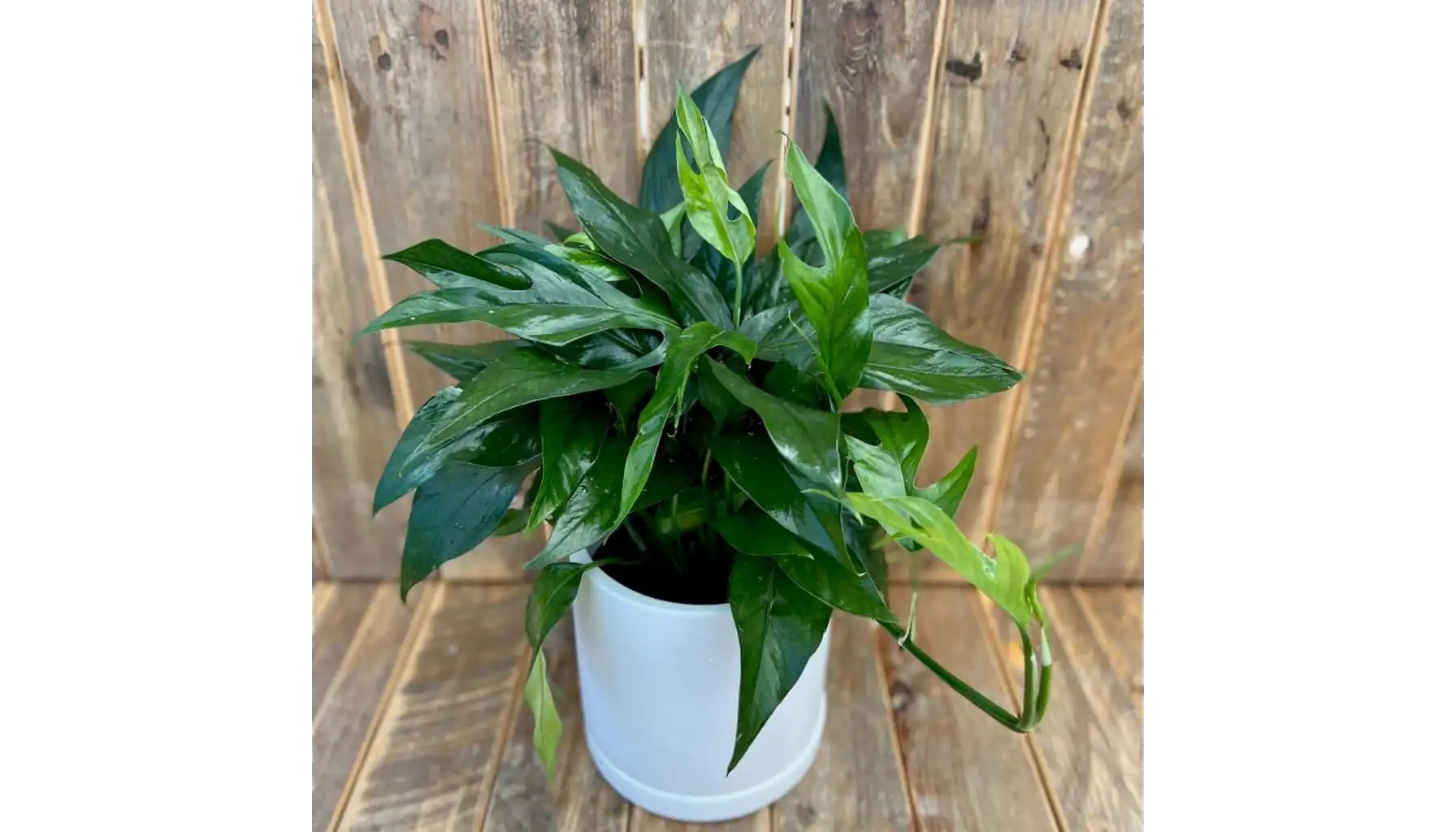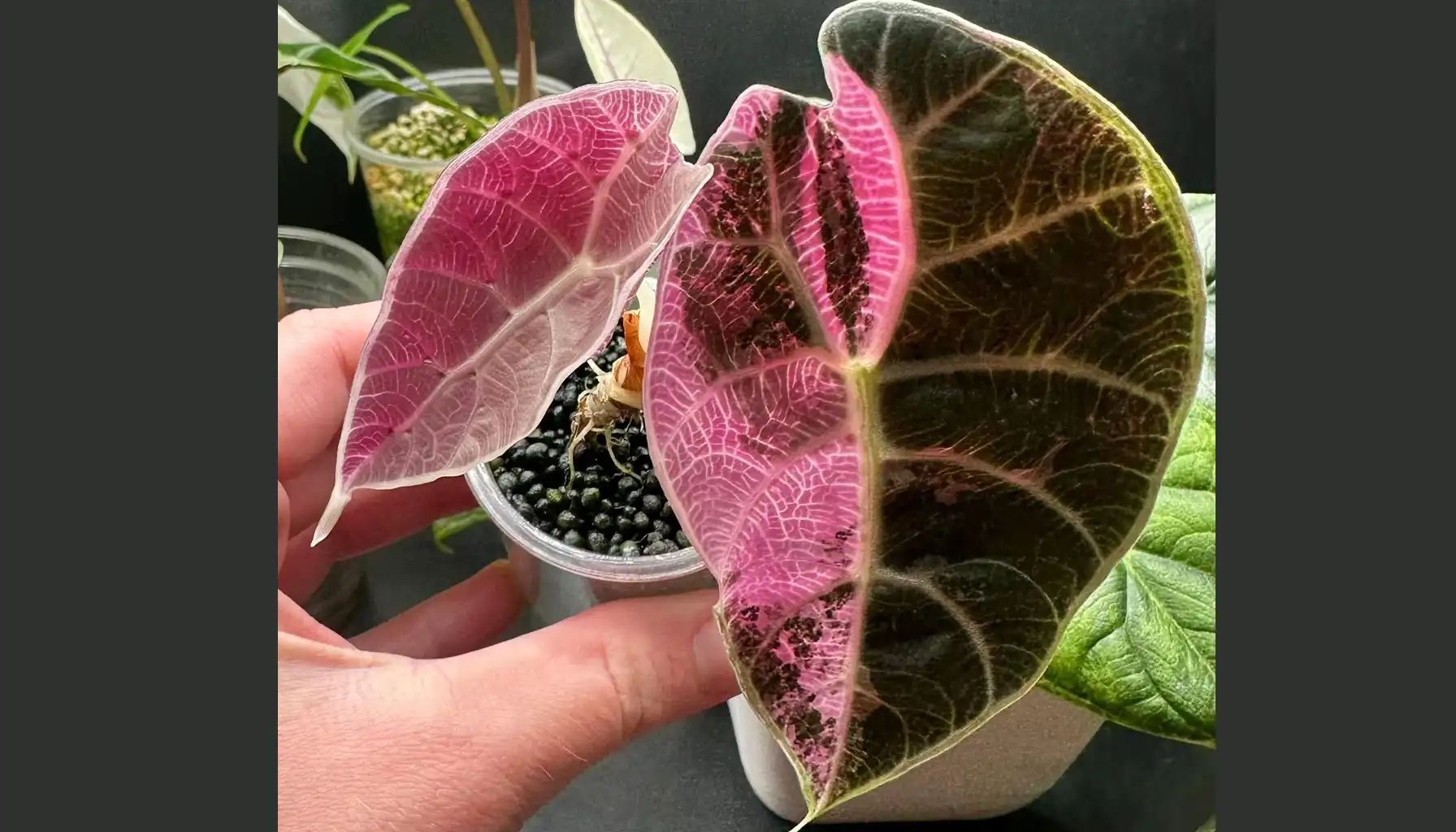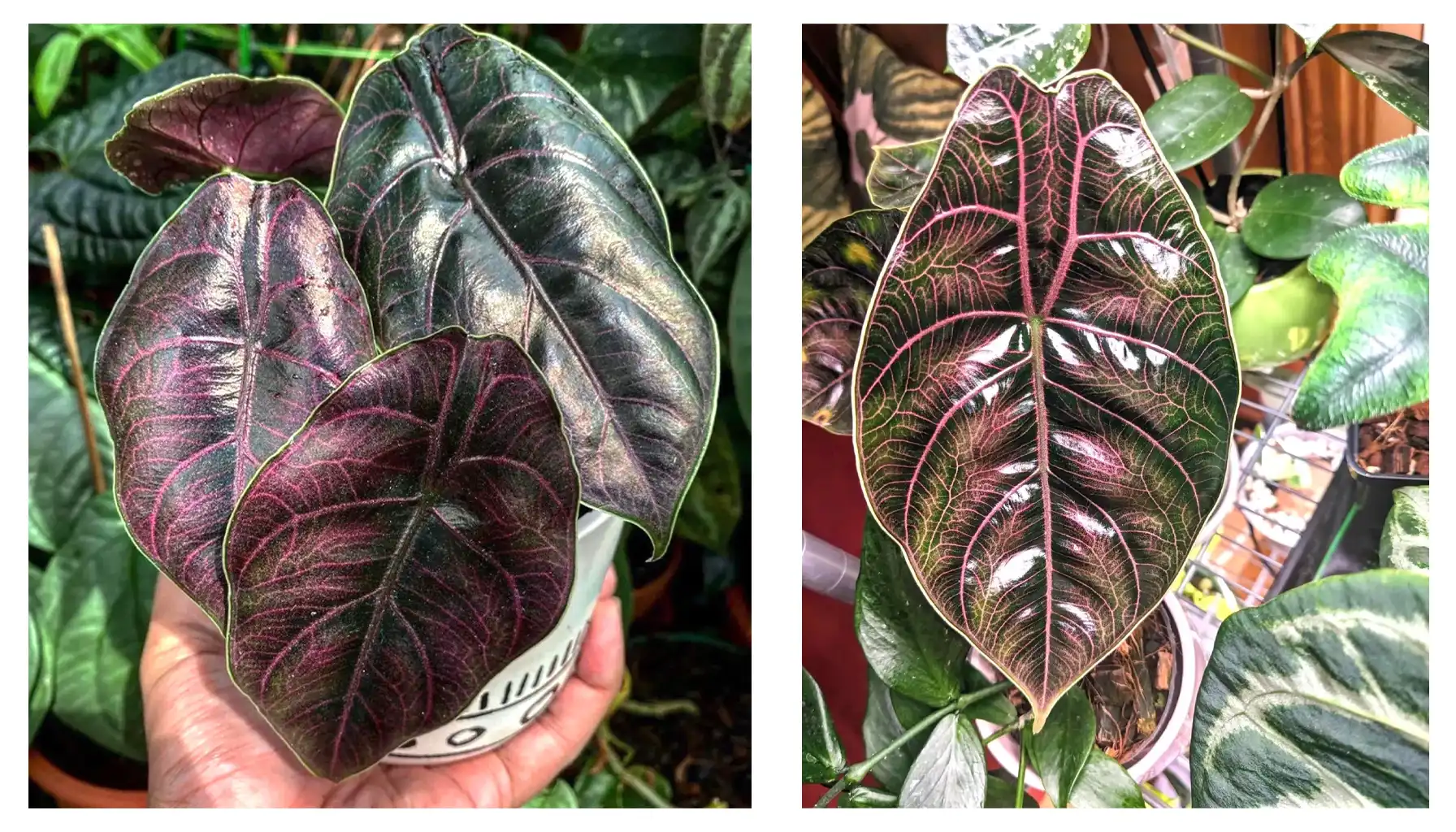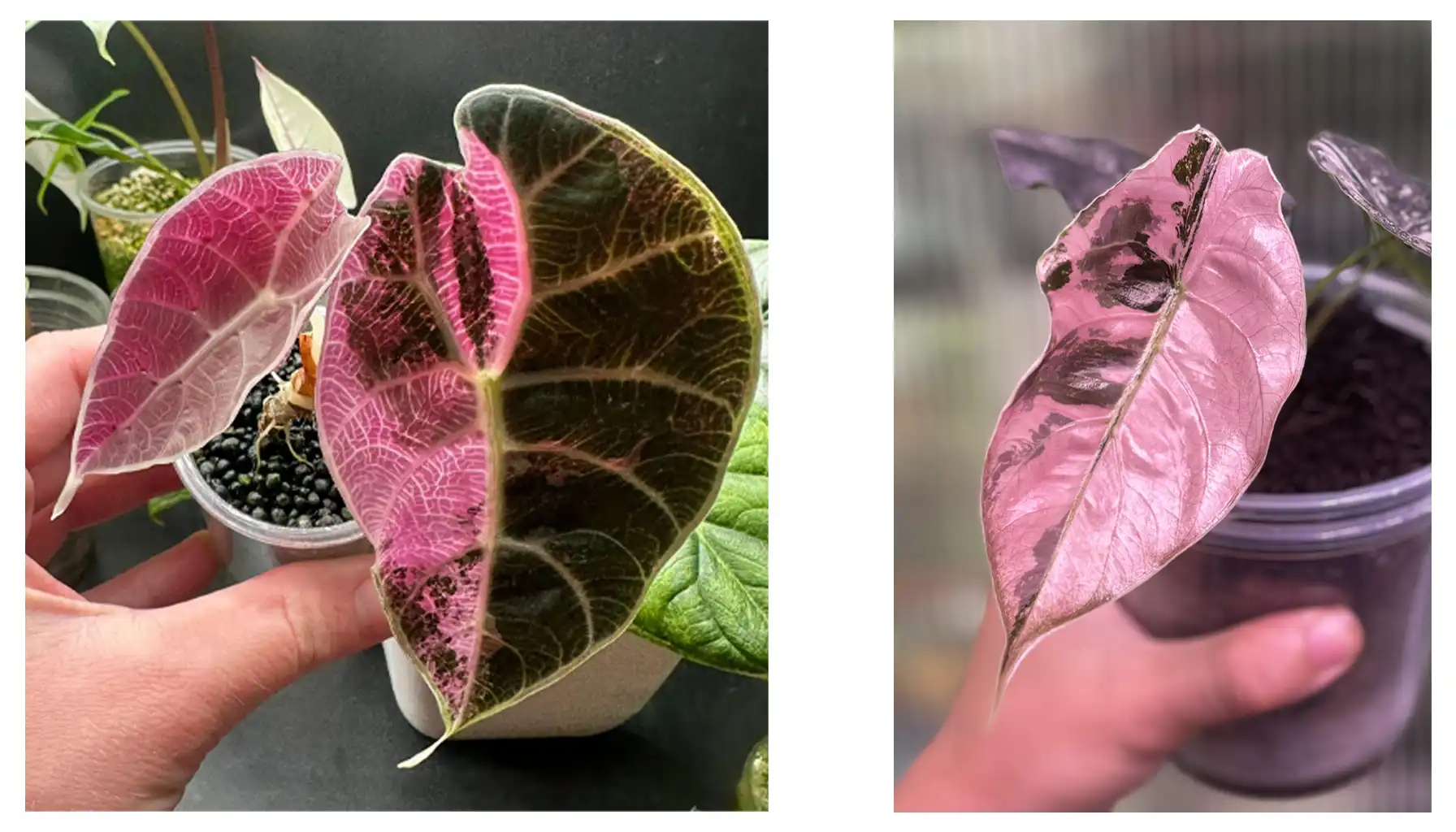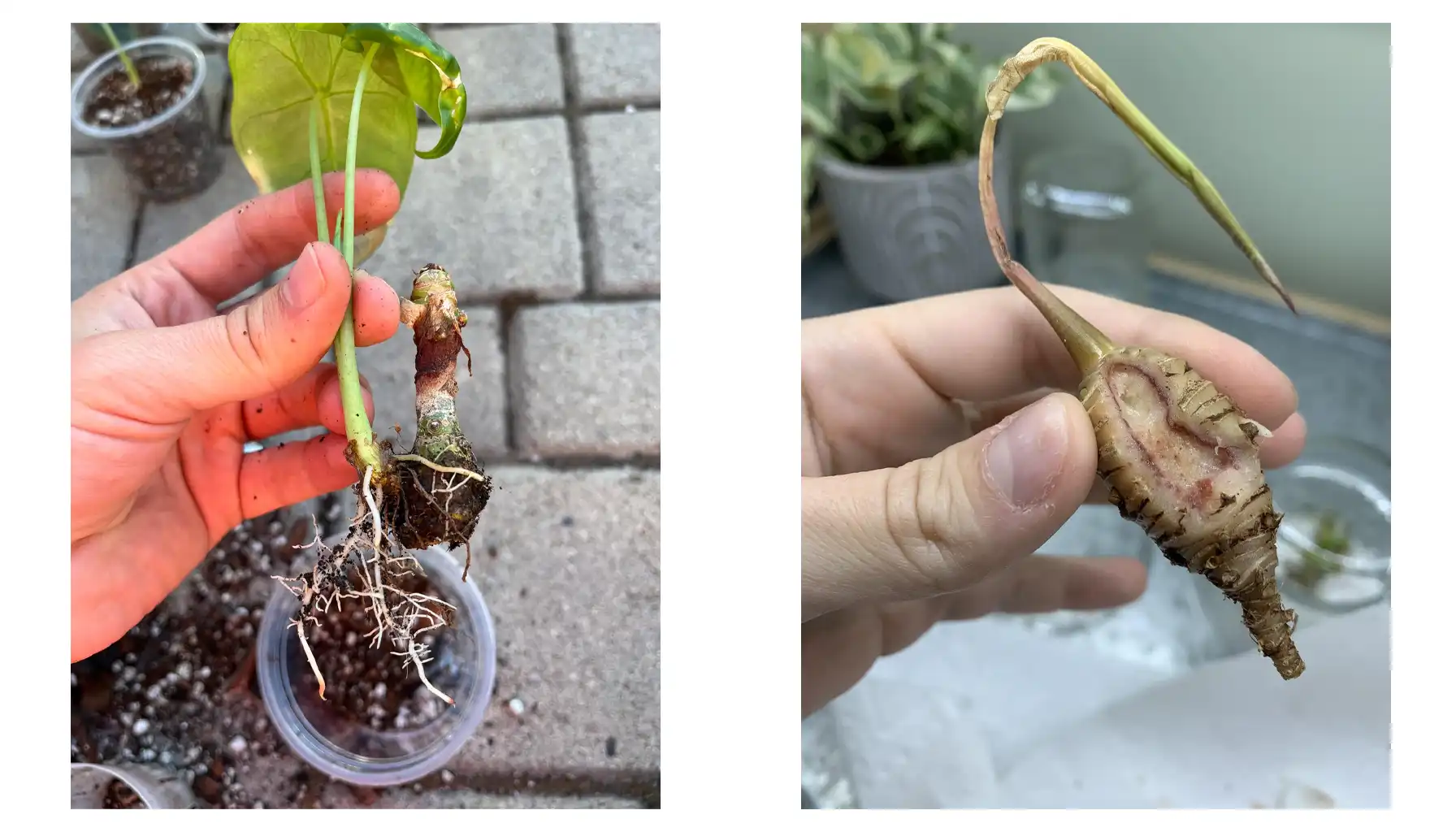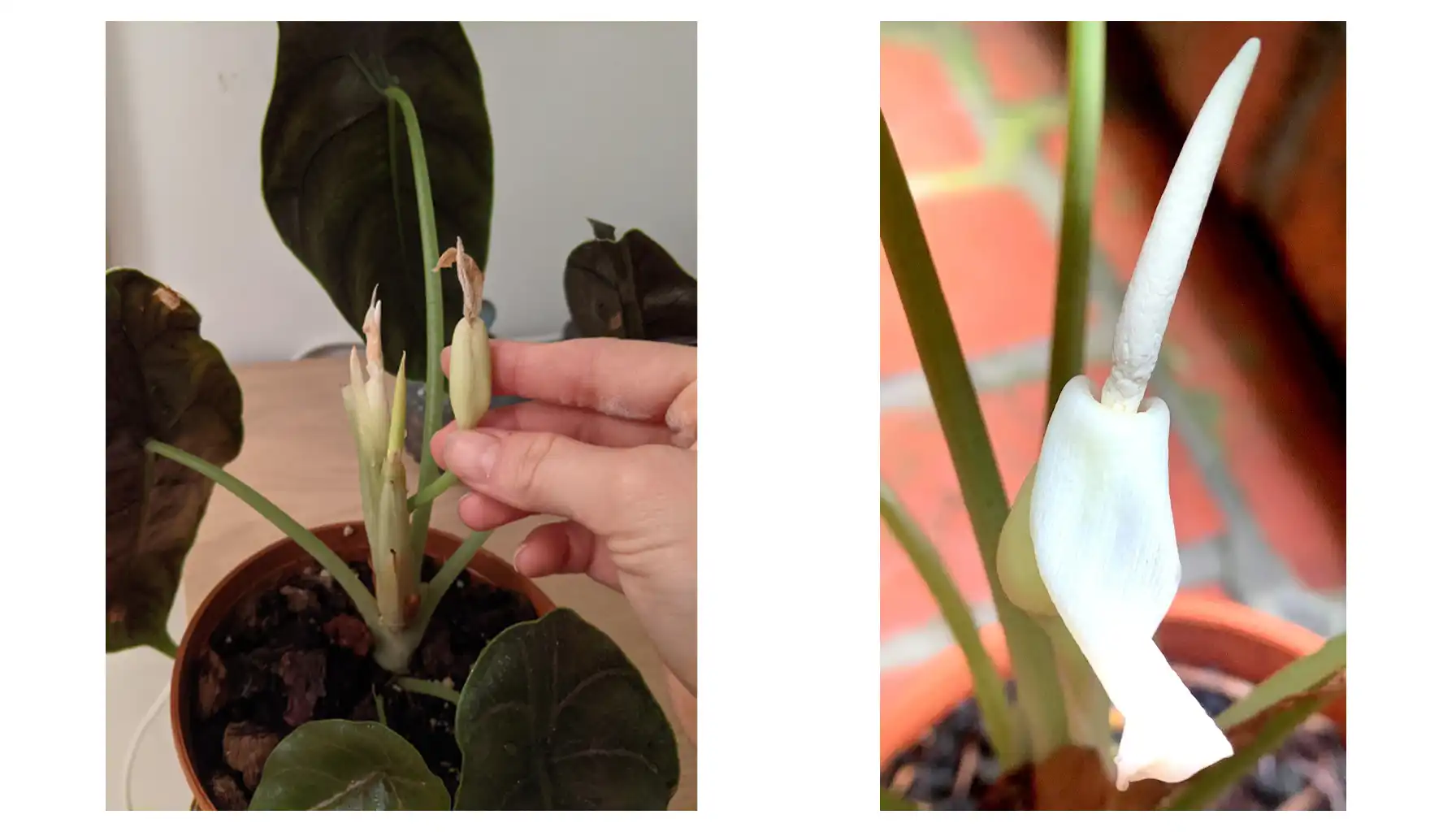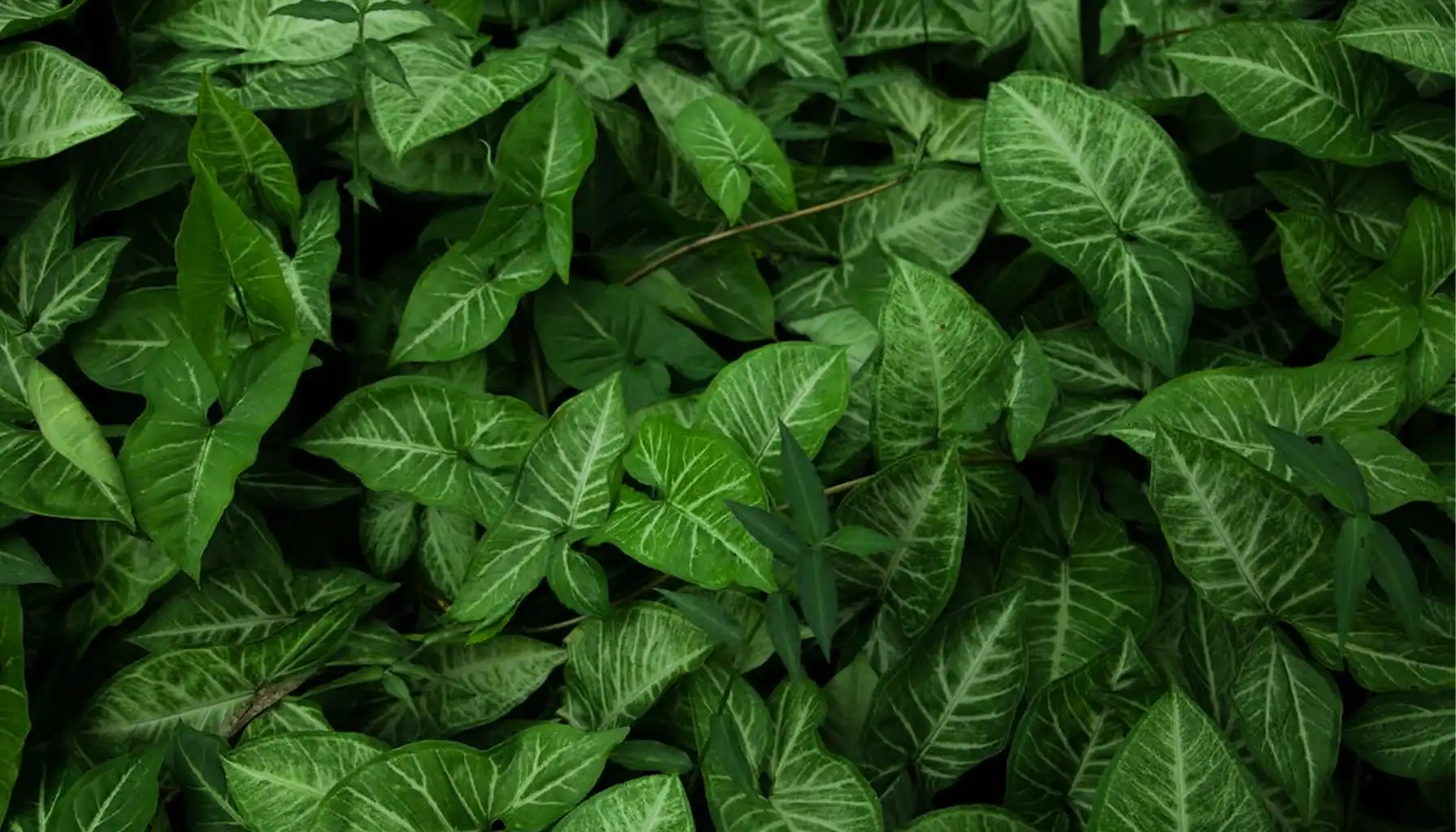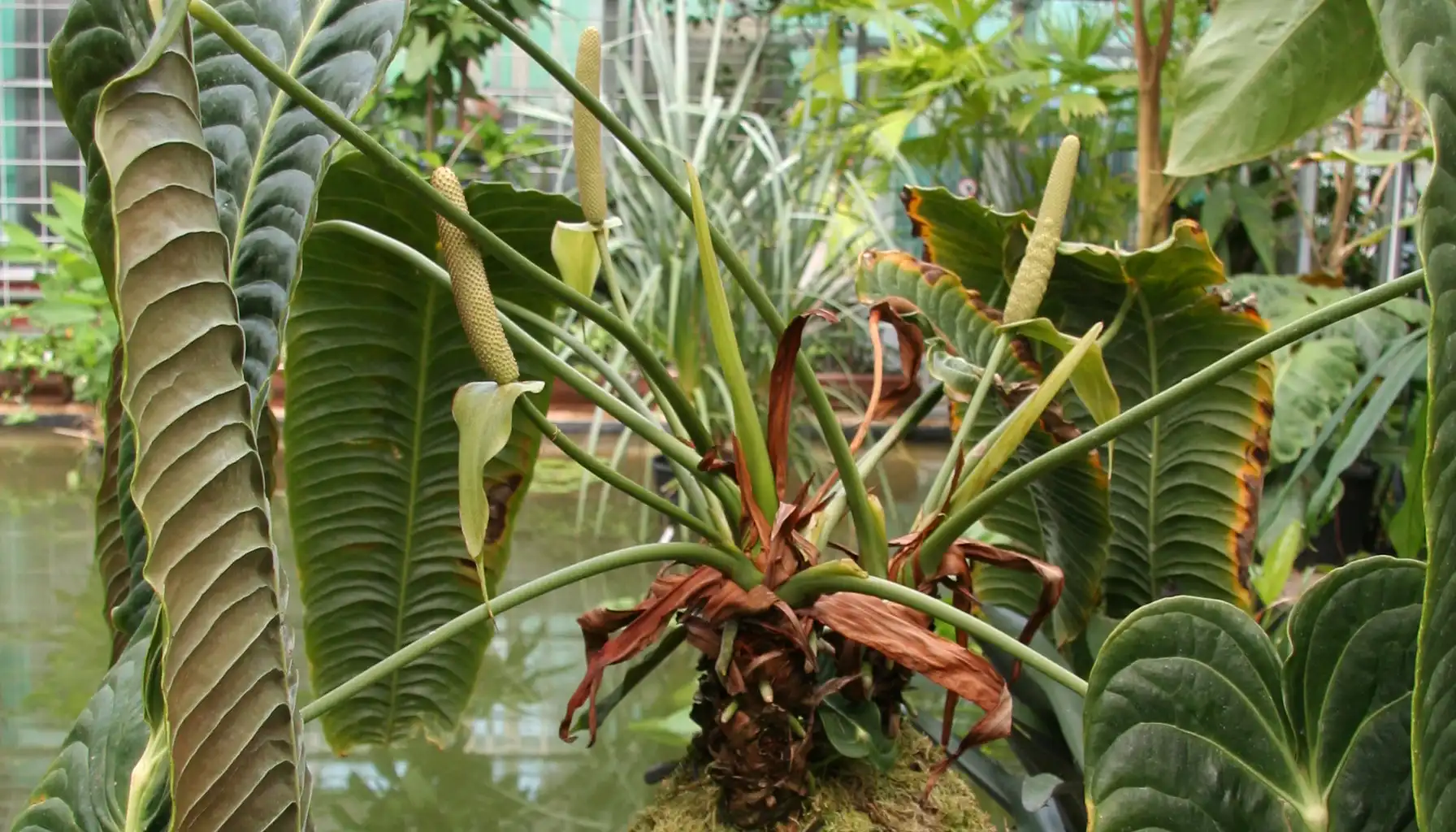Are you tired of the same old house plants? How about one that was discovered in 2016? That is Alocasia Azlanii, fresh from Brunei, a country from a faraway Asian island.
Get ready for care tips about these plants, as well as useful information about Alocasia.
Do you have an app to identify plants? With such an app, gardening becomes an easier job.
Plant Overview
Alocasia Azlanii was discovered by K.M. Wong & P.C. Boyce in Brunei. It was first described in 2016 and is admired for its red to purple patterning around its leaf veins.
Like other members of the Alocasia family, it’s an ornamental plant, a deserved title. This shrub looks unique, and some describe the foliage texture as looking like dragon scales
Azlanii Alocasia Overview |
Feature | Details |
Origin | Brunei in Southeast Asia |
Type | Tropical perennial |
Size | Typically 45–60 cm (18–24 in) tall and 30–45 cm (12–18 in) wide |
Life span | Can survive multiple years indoors |
Leaf Colors | Dark, almost black-green base with a metallic sheen |
Flowers | Appear rarely and resemble Peace lilies |
Propagation | Rhizome division |
Toxicity | Toxic to humans and pets (if ingested or touched by the sap) |
Special Features | Rare and has a unique pattern |
Alocasia Varieties
Being an ornamental plant, it’s not surprising that this plant has many colorful varieties. Usually, when we deal with most shrubs, they have varieties of different rarity, but for this Alocasia, any variety is rare. The plant is still relatively new and cultivated in a limited way.
Alocasia Azlanii Red Mambo
The most popular variety. Actually, it’s so popular that most consider it just a “common” Alocasia Azulani. Some traders still call it “Red bamboo”, but it’s just to accentuate their deep, glossy leaves with vibrant red/pink venation, and purple backsides.
This Alocasia Azlanii variegated specimen is also sometimes called a “Jewel”, because its variation (pattern on the leaves) has veins resembling lines on a cut gem.
Alocasia Azlanii Pink Variegated
This Alocasia has lighter tones compared to the red ones. Sometimes it is referred to as “Albo” or Alocasia Azlanii Aurea. The foliage has patches of white, giving it a metallic look.
Pink Azlanii Alocasia also has a debated status as a cultivar. Some say that genetically it’s the same “Red Bamboo" just with a color that ended up a bit differently. Still, no one can deny the beauty of this foliage.
Alocasia Azlanii Care
This shrub is tropical, but don’t let it scare you. A lot of tropical plants can be easily managed, like Dieffenbachia. Alocasia needs just a bit more care.
Light
Bright, indirect light is the best choice for this shrub. You'll have to avoid direct midday sun because it can scorch the shrub. Low light is detrimental too, as it slows growth, and your Alocasia Azlanii full-grown plant will appear rather small.
Temperature
Keep this shrub between 18–27 °C (65–80 °F). This temperature range is on the wider side compared to most house plants.
In winter, do not let temperatures drop below 15 °C (60 °F). You’ll have to protect your plant from freezing. Protect from drafts.
Watering
The watering routine is similar to most other shrubs. Keep soil evenly moist but not soggy, and water it when the soil seems dry. o Reduce watering in winter when growth slows.
Soil and Fertilizer
To this day, a well-draining aroid mix (potting soil + perlite + orchid bark + coco coir/charcoal) remains one of the best picks for Alocasias. Remember to always plant in a pot with drainage holes.
If you want to help reach Alocasia Azlanii's full size faster, it feeds during spring and summer every 4–6 weeks with a balanced liquid fertilizer at half strength. Stop or reduce feeding in autumn and winter.
Propagation Guide
It’s often that tropical shrubs propagate by rhizomes. Rhizome is a root structure. When put in a different spot and cared for, it will start growing leaves and turn into a new shrub. It’s best to propagate in spring or early summer when the plant is actively growing.
Carefully remove the plant from its pot. It’s easier when the soil gets dry. Gently shake or rinse off the soil to expose the rhizomes and roots.
Locate natural divisions where rhizomes have their roots and at least one healthy leaf.
Use a sterile knife or shears to separate sections. Make clean cuts to avoid damaging the plant. You may use apple rooting hormone to prevent rot and encourage growth.
Plant each division into a small pot with fresh, well-draining aroid mix.
Water the growing sapling lightly to settle the soil, keeping it slightly moist but not soggy. Place the pot in bright, indirect light with high humidity (60–80%) and warm temperatures (20–27 °C / 68–80 °F).
In a few years, you will have another mature shrub. Take good care of it, as it’s a rare specimen.
Pricing
As expected for a relatively new shrub, Alocasia has a hefty price. The lowest reliable prices start from $15, but rarer colorations (like a variegated Alocasia Azlanii) can exceed $350! Plus, don’t forget about the shipping costs.
If you are a beginner, maybe you should “train” on other Alacoasia before Azlanii. Losing such a rare and arid plant will hurt more than losing a more ordinary specimen.
Growth Cycle and Flowering
In nature, this shrub starts with a seed. Seeds grow for a very long time and appear rarely. That's why today gardeners usually grow new shrubs from the roots. Throughout spring and summer, this shrub grows and enters dormancy through the colder months. In a few years, it becomes mature and starts flowering.
People love flowers, and even though Alocasia stands out because of its foliage, many want to see its flowers too. Unfortunately, just like a cactus, this shrub blooms rarely indoors. If the plant is mature and healthy, it may flower in your house, but it’s a rarity.
In nature, Alocasia Azlanii mature plants bloom during the warm, rainy seasons. When it blooms, it produces a small, pale green to cream-colored spathe (a sheath), and then it’s pollinated by insects. After about a week, the flower dies.
Toxicity and Safety
Is Alocasia Azlanii toxic? Unfortunately, it is toxic for pets and people.
This shrub contains calcium oxalate crystals, and munching on its leaves or stems can induce nausea, swelling, and a burning sensation. The sap of this shrub can also irritate your skin, and for these reasons, it's better to handle this flora with gloves.
Fear not. The poisoning is not deadly, and the oxalate crystal appears in a large number of popular house plants, like Croton.
Home Benefits
Alocasia Azlanii's big benefit is its beauty, but this shrub has more to offer to your home.
Benefit Type | Details |
Aesthetic Appeal | This shrub can be a decorative centerpiece. Metallic sheen on leaves with deep green and red/pink-tinged veins is stunning. |
Indoor Air Quality | Helps slightly improve indoor air by absorbing some toxins and releasing oxygen. |
Tropical Ambiance | Creates a lush, exotic feel in homes or offices, and adds a calming, natural vibe to your room. |
Collectible Value | Rare and sought-after among plant collectors. Special varieties are highly prized. |
AI Plant Finder
The AI Plant Finder is a free app for plant identification. It can help users identify flora, diagnose plant diseases, and receive personalized care tips.
When you take a photo of a plant, the app utilizes artificial intelligence to analyze the image and provide accurate results, including characteristics, growing tips, and care requirements.
The platform is exceptionally accurate, with 97% for flora identification and around 98% for disease identification.
All in all, this app is a great tool for any gardener and/or botanist. Feel free to try this app.
Related AI Plant Finder Posts
